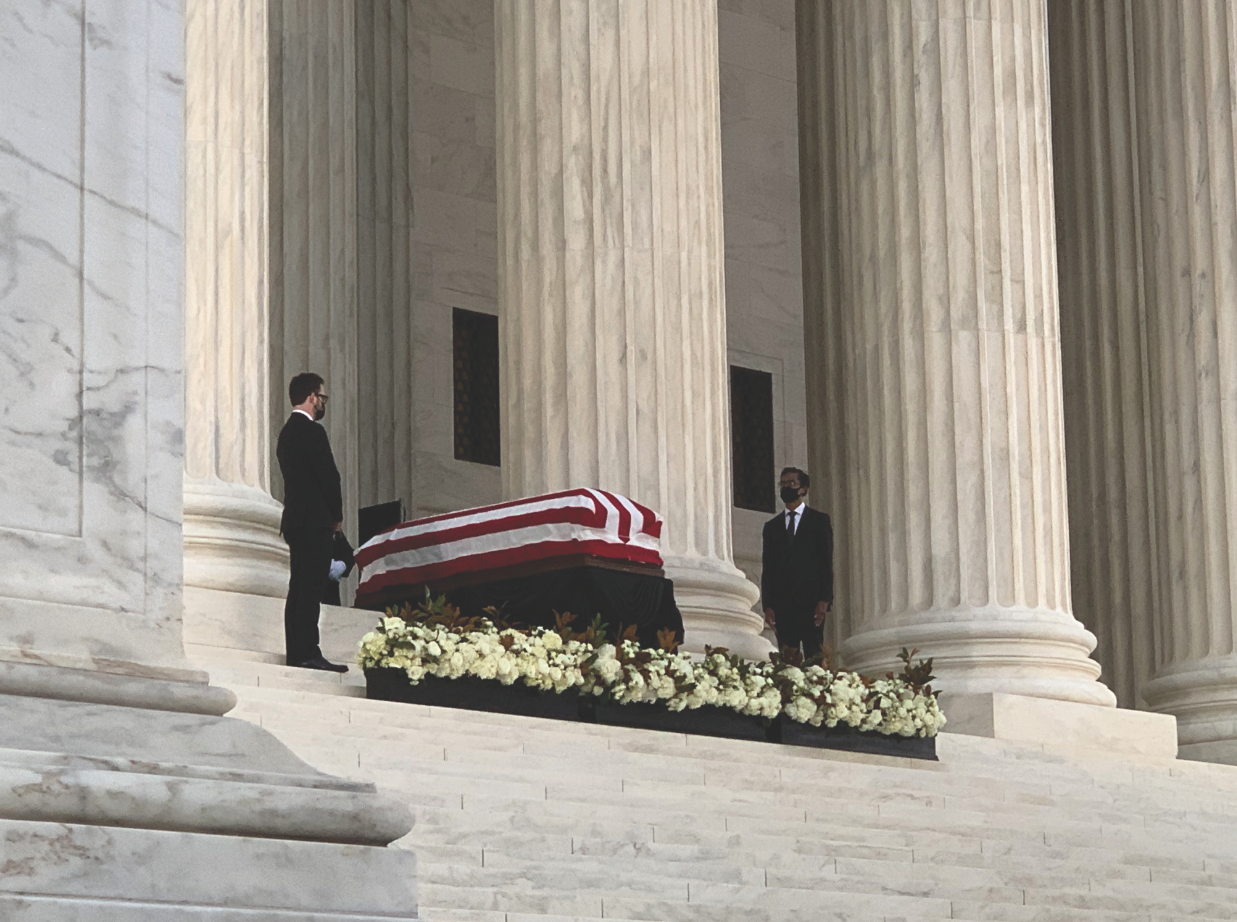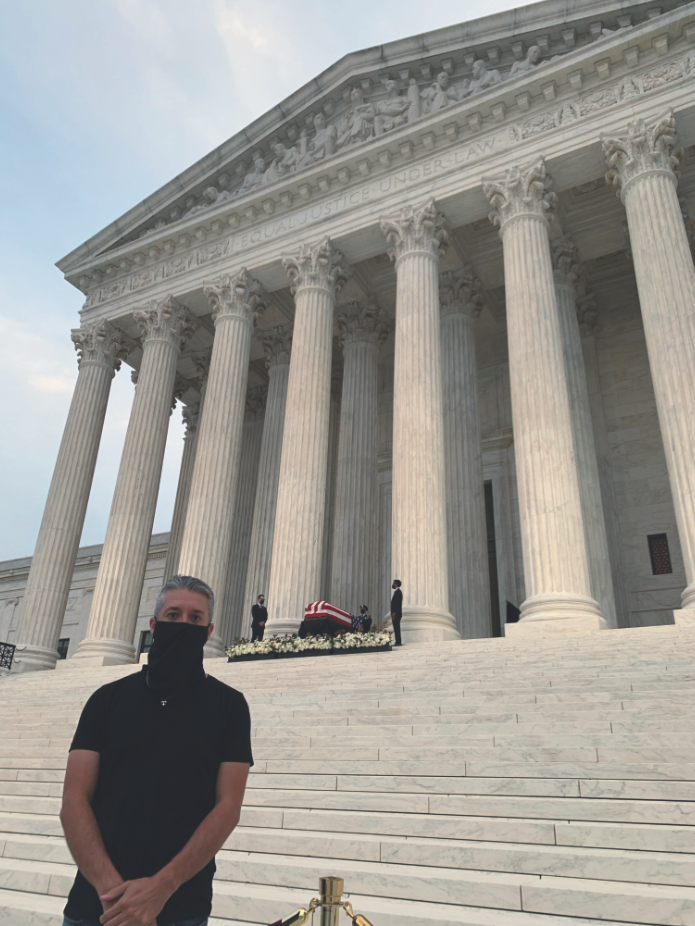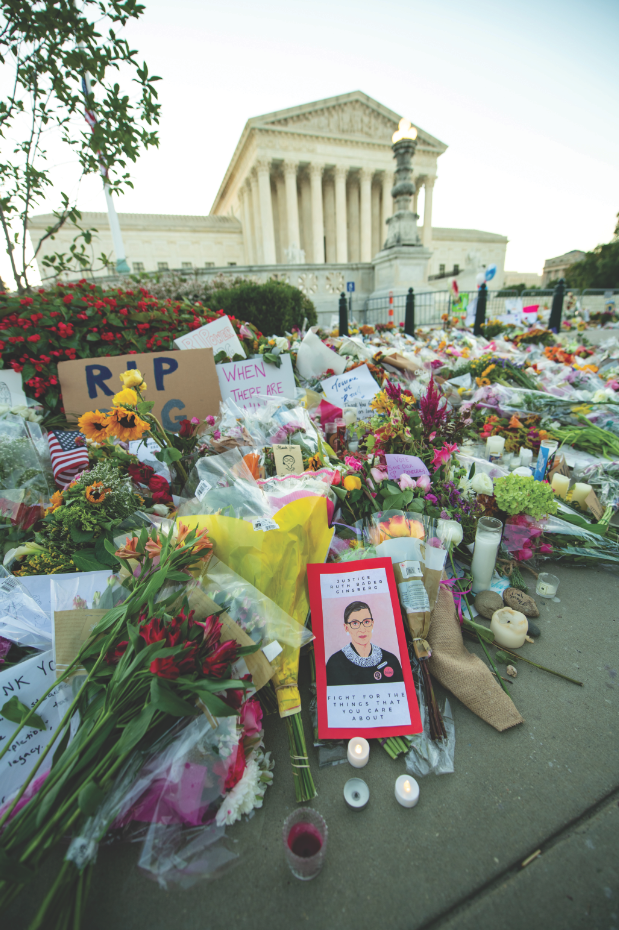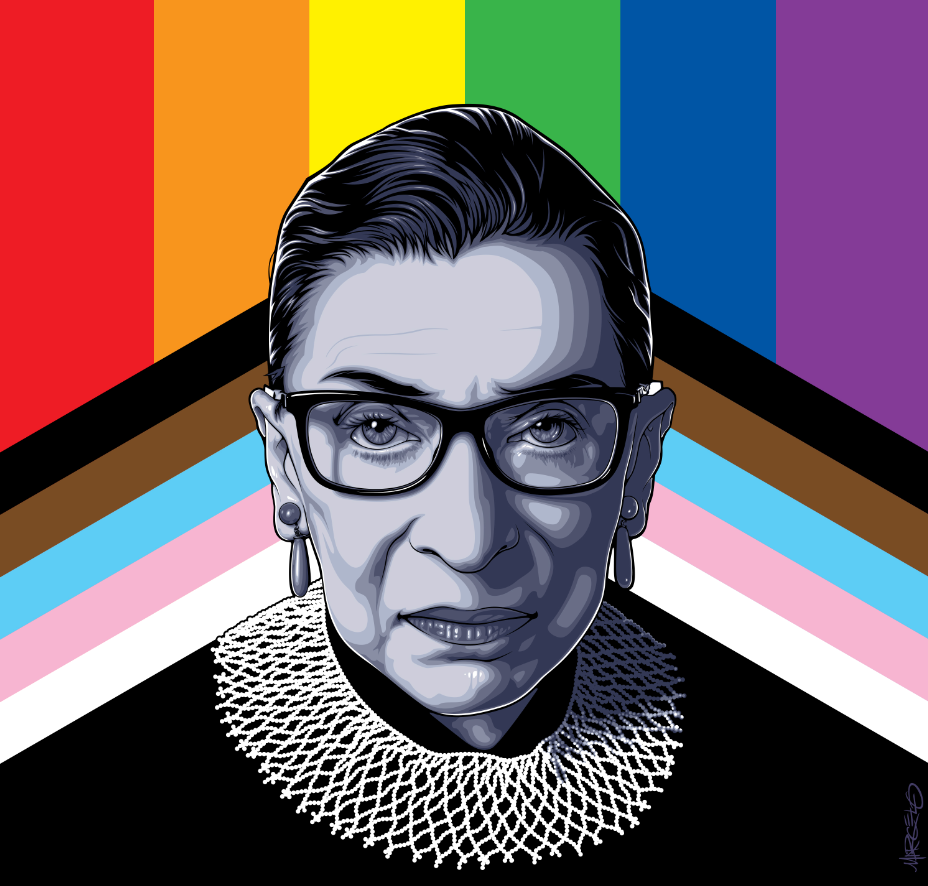For the better part of six decades, Ruth Bader Ginsburg championed women’s rights, first as a top law student in a male-dominated field, and then as a respected attorney arguing six cases at the U.S. Supreme Court in the 1970s, effectively becoming an architect of the women’s civil rights movement.
On Friday, Sept. 18, 2020, Justice Ruth Bader Ginsburg died of complications from metastatic pancreatic cancer. She was the second woman to serve as a Court Justice and will perhaps go down in history as one of the court’s most well-known figures.

I made the journey to Washington, D.C. to honor her life, mourn her loss, witness history unfold, but most importantly, to surround myself with others who also had a need and desire to mourn her death on the same marble steps that have been the foundation of law, equality, and justice for millions of Americans.
Her death dealt a blow to those who admired her. As a cultural icon and liberal vote on the Supreme Court during the current political climate, she gave hope to millennials, young women and minorities who could count on her vote as fair and just in a wide range of cases, most notably health care, abortion, women’s rights, LGBTQ+ rights and minority rights.
And although she was considered a solid liberal vote, it was people from all walks of life, ages and backgrounds, from all around the world who paid tribute to her as she lay in repose for two days under the Portico of the U.S. Supreme Court, and later honored as the first woman and first Jewish individual to lie in State at the United States Capitol.

Thato Majola, a 30-year-old law student visiting Boston from South Africa, decided to extend his visit to the United States and took a train to Washington, D.C. in order to get a chance of viewing her casket.
“Justice Ginsburg is well known in law circles around the world. Her interpretations of U.S. law have undoubtedly shaped millions of lives in America, but they have also impacted how other nations view and implement their own laws, specifically women’s rights.”
Laura Carina, a 26-year-old student from Chicago, made the trip to Washington, D.C. because she “felt an urgent and necessary need to mourn her death, and pay tribute to the most powerful and underestimated woman in our history.”
Carina, who also describes herself as a Queer feminist, borrowed money from her parents to pay for the flight and hotel, adding, “When I told my parents what I needed the money for, they said, ‘Of course you have to be there. It’s totally you. Go!’”
Carina says, “It’s been so emotional to be here. She was like a rock star — every young person cherished her as someone who fought for people who didn’t have a voice. She will be missed terribly, and the thought of not having her as our nation navigates President Trump frightens me.”
As an activist, I made the journey for similar reasons. It’s a journey I had made on several occasions. First, as a young man in high school to study how our government works, and then later to witness oral arguments on cases being argued at the court — including Obergefell and the recent LGBTQ+ employment discrimination cases.
When visiting the court chambers, it was difficult not to be starstruck by Ginsburg’s pretense. But I was also mesmerized by her ability to make her point across her colleagues, by asking questions to the attorneys who were arguing a case before her.
I, like the thousands of others who made the journey to D.C., admired her as a judge and as a beacon of hope during troubling times.

When her death was announced, my heart sunk in sadness for her loss and for the sudden realization that our lives would most certainly be affected for generations to come by her successor.
In D.C., I spoke with dozens of people who all shared similar sentiments as Thato and Laura. But I also spoke with members of conservative religious groups, who told me they respected her as a “fair and educated judge that devoted her utmost attention to law and the constitution.”
Person after person, story after story, everyone I spoke to had only good things to say about Justice Ginsburg. But they also shared that same dreadful feeling for the future.
In remembering Justice Ginsburg’s long career, and in reading some of her most memorable dissents and opinions, I gained a little bit of peace — recognizing that this titan of justice, known as “The Great Dissenter,” had in a way gone full circle in her career fighting for gender equality.
In case after case, Ginsburg chipped away at the notion that men were superior to women. And in 2020, she used some of her earlier arguments and wins to expand the definition of sex and gender to also include LGBTQ+ individuals ensuring our equality under the Civil Rights Act of 1964.
Sadly however, it’s important to recognize that even in 2020, we must still acknowledge that in death, Ginsburg became the first woman to lie in State at the U.S. Capitol. It is rare honor that has been granted to just 36 individuals in U.S. history, including 12 presidents, four unknown soldiers and a number of Congressmen.
In that fact, at least for me, is a sad reminder that the ultimate glass ceiling still remains unbroken. Until we have a woman as vice president and president, we will only have had Justice Ruth Bader Ginsburg, a champion for women everywhere and a true friend of our cause as LGBTQ+ activists.

facebook.com/melmarceloart
May she rest in power, she certainly deserves it. Her long career and fight for equality, and justice under law is finally over. “Tzedek, tzedek tirdof — justice, justice you shall pursue.”
–Eddie Reynoso is the executive director of the Equality Business Alliance, and founder of the San Diego LGBT Visitors Center. He is also an LGBTQ+ civil rights activist.









